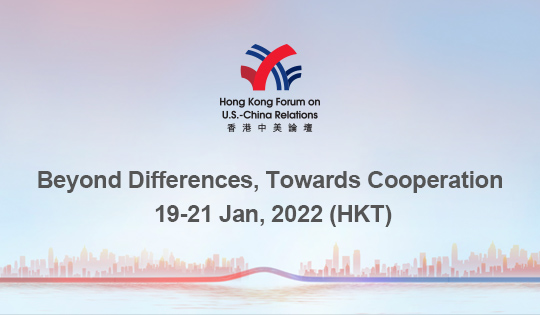Late last month, Chinese and North Korean leaders found themselves showered with an unexpected gift from Japan: Prime Minister Shinzo Abe’s visit to Tokyo’s controversial Yasukuni Shrine, where 14 “Class A” war criminals — the category reserved for political and military leaders prosecuted in 1946 for starting and waging war — and over 1,000 individuals convicted of lesser war crimes are commemorated. Mr. Abe’s homage to Japan’s war dead, in the court of world public opinion, smacks of denial of his nation’s wartime aggression — and has been widely condemned.
This impression only strengthens China’s hand in current disputes with Japan — and therefore also in its strategic competition with the United States. It also advances North Korea’s aim of driving wedges into the coalition of the United States, South Korea and Japan.
An increasingly assertive China and belligerent North Korea — two states founded on the anti-Japanese revolutionary credentials of their respective leaderships — will surely exploit Japan’s perceived embrace of militarism, particularly at a time when Japan is bolstering its defense policy as never before in the postwar period. The image of an unashamedly bellicose Japan, however, has no benefit whatsoever for the United States, which is allied to Japan by a security treaty that grants the right to maintain military bases on Japanese territory.
On the day of Mr. Abe’s visit to the shrine, Washington joined the chorus from Beijing and Seoul, whose denunciation ranged from “strong indignation” to “rage.” Days later, the Chinese Foreign Ministry likened Mr. Abe’s visit to the shrine to honoring “the Nazis of Asia,” while North Korea characterized it as a path to “self-destruction.”
Using unusually blunt language, the American Embassy in Tokyo stated that “the United States is disappointed that Japan’s leadership has taken an action that will exacerbate tensions with Japan’s neighbors.” While the strategic imperatives of the American-Japanese alliance will survive this incident, Mr. Abe has set back Japan’s international diplomacy and undone much of the work of his predecessors who made Japan a model of peace, democracy and development in the post-1945 world.
On the surface, the Yasukuni compound offers a typical vignette of Japan, with its meticulously maintained gardens and the graceful movements of its Shinto priests. But just a short stroll from the main shrine, the visitor finds a consecration of lies and half-truths that tarnishes Japan’s post-1945 ascendancy: the Yasukuni War Museum.
Here are historical narratives that glorify Japan’s brutal colonization of Korea from 1910 to 1945 and the 1937 invasion of China, which involved the massacre of hundreds of thousands of Chinese civilians. The attack on Pearl Harbor is even presented as contributing to “world peace.”
The museum also houses a memorial to the Indian jurist Radhabinod Pal, who was the sole judge on the postwar International Military Tribunal for the Far East to argue that all the Japanese defendants were not guilty. The message is clear: Japan fought for peace, fell victim to the more powerful Allies, and was served victor’s justice.
This grossly distorted version of Japan’s war record, not surprisingly, ignites righteous indignation among Japan’s neighbors. But Mr. Abe has done more than give offense. His visit has undermined the American strategy of “rebalancing” in Asia — in particular, the Obama administration’s efforts to bolster its alliance with Japan and South Korea, in the context of China’s expansionist foreign policy and the ever-present security threat posed by North Korea.
South Korea has rebuffed Japan for over a year thanks to historical slights precisely of this nature. Prospects for renewed talks had improved in recent weeks, but it is now extremely unlikely that there will be any thaw. To Washington’s dismay, Mr. Abe’s disregard for Koreans’ sense of the trauma about the Japanese occupation has given South Korea’s president, Park Geun-hye, no option but to cool relations.
The specter raised by Japan’s new national security strategy — with its implication of military operations beyond its borders — already made Japan’s neighbors wary. Now, because of the Yasukuni Shrine visit, some may band together against the perceived aggressor.
Seoul and Beijing are already discussing measures to address the “Japan problem” — a bilateral conversation that will perturb the Americans. Any fissure in the United States-Japan-South Korea coalition is good news for China and North Korea, which have been fretting over America’s endorsement of Japan’s new national security policy. A possible result is that China will pursue still more aggressively its claim over the disputed islands. North Korea may try to fan anti-Japanese sentiment in South Korea, as well as create security threats to test the alliance of democracies.
Mr. Abe may have intended, as he said, simply to pray for the souls of his nation’s war dead. But in the eyes of the world, his pilgrimage to the Yasukuni Shrine appeared a willful evocation of Japan’s pre-1945 imperialism and repudiation of its post-1945 legacy of peace. This was a move that may ultimately serve the interests of China and North Korea, rather than Japan. Given the perception of an unabashedly aggressive Japan that he has created, Mr. Abe will find an already challenging foreign policy environment considerably more daunting as he faces an expansionist China, belligerent North Korea, indignant South Korea and exasperated America.
Sung-Yoon Lee is a professor of Korean studies and an assistant professor at the Fletcher School of Law and Diplomacy at Tufts University.
© New York Times


